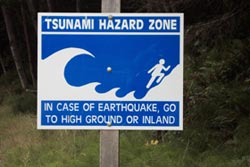Fire Prevention Week falls during the month of October and with it, a new Fire Safety Census was published by Liberty Mutual Insurance Company and the International Association of Fire Fighters (“IAFF”). The survey revealed that many people unknowingly engage in risky behaviors and while nearly all respondents expressed concern about fire safety, many did not take basic precautions, such as checking out home smoke alarms or learning how to use a fire extinguisher. Based on the survey results, Liberty Mutual and the IAFF have put forward fire safety recommendations:
- Test smoke alarms once a month.
- Change smoke alarm batteries once a year – at an easy-to-remember time, such as when clocks are changed.
- Replace a smoke alarm that’s more than 10 years old
- Buy a fire extinguisher, mount it, and learn how to use it. Revisit the instructions every six months.
- Never leave burning candles unattended or near combustible materials – home fires caused by candles have doubled in the past decade.
- If a fire alarm sounds, or smoke is visible, evacuate first and then call the fire department.
- Close doors behind you when leaving the room and building to slow the spread of fire and smoke.
- Plan an escape route that shows two ways out of each room.
- Identify a meeting place near the home.
- Practice an escape plan – during the day and night – at least twice a year.
- Talk to children frequently about preventing fires and escaping fires.
- Do not leave a dryer on unattended.
- Do not leave a stove or oven on unattended.
- Keep portable heaters at least three feet away from all combustible materials and never leave them on unattended.
- Never disable a smoke alarm.
- Do not overload power strips.
- Turn holiday lights off when not at home.
For more information on the survey and fire safety tips go to www.befiresmart.com.








